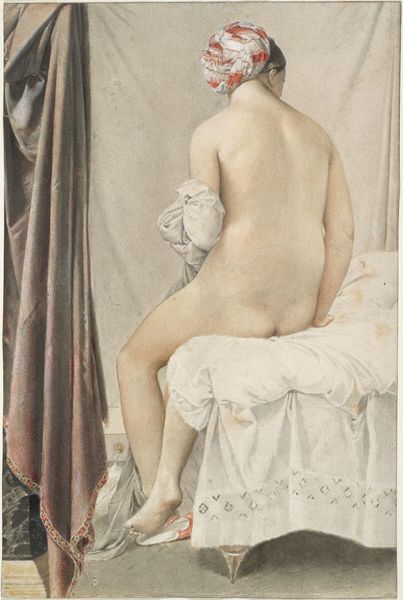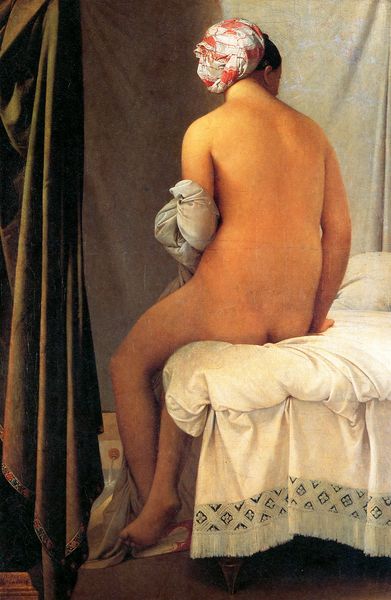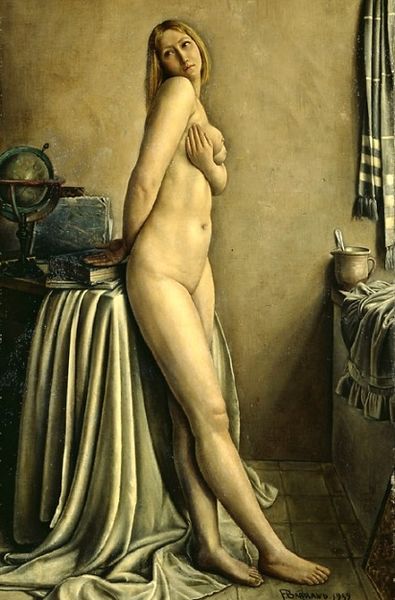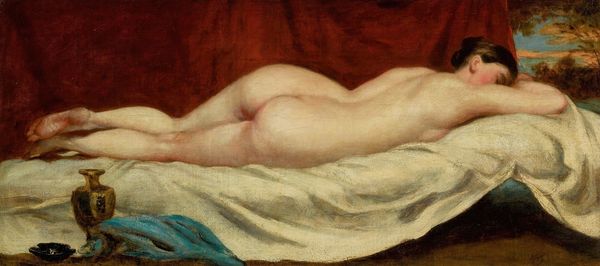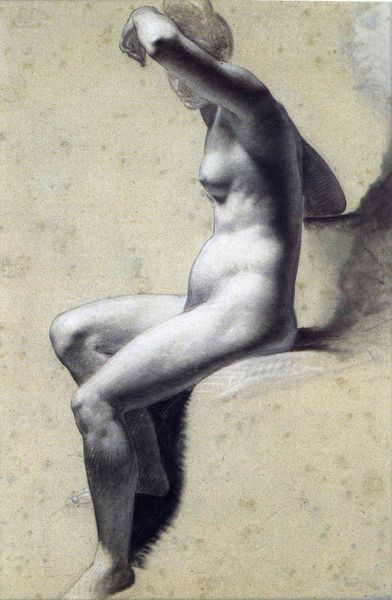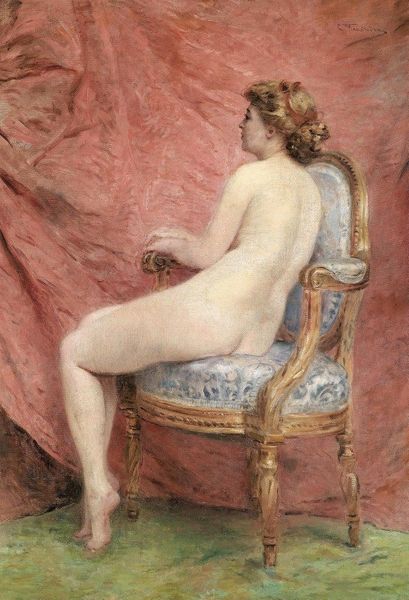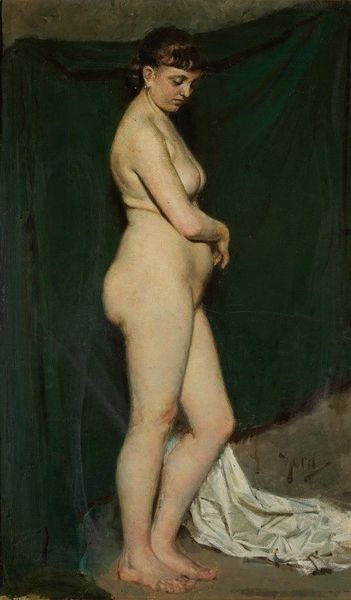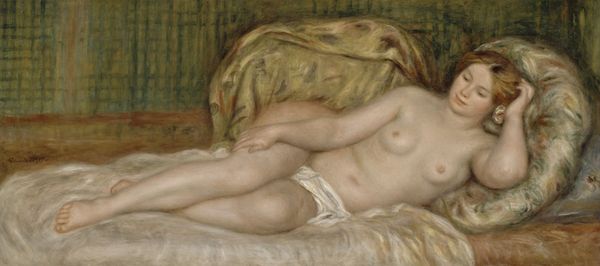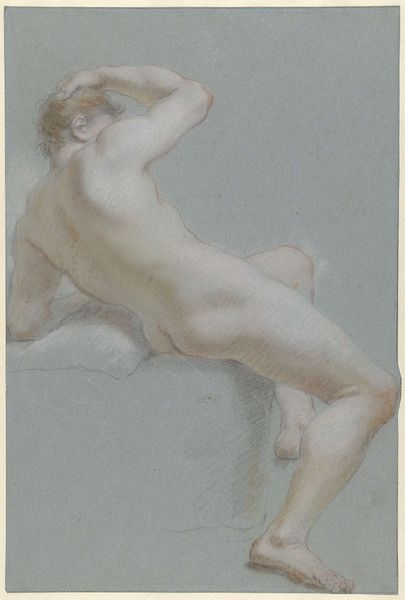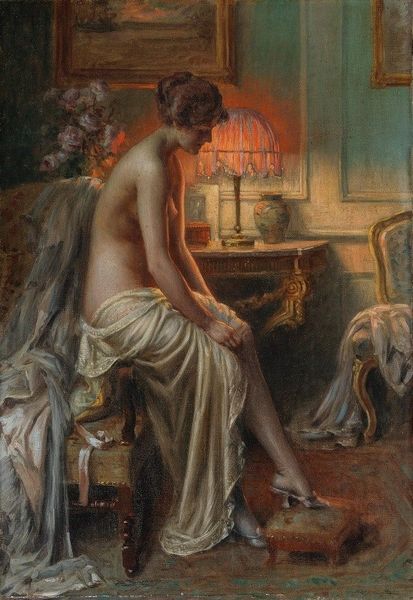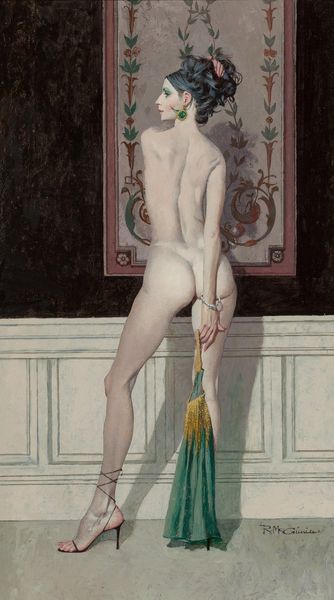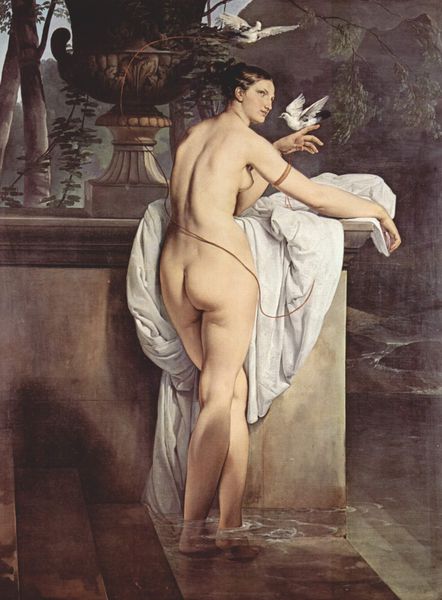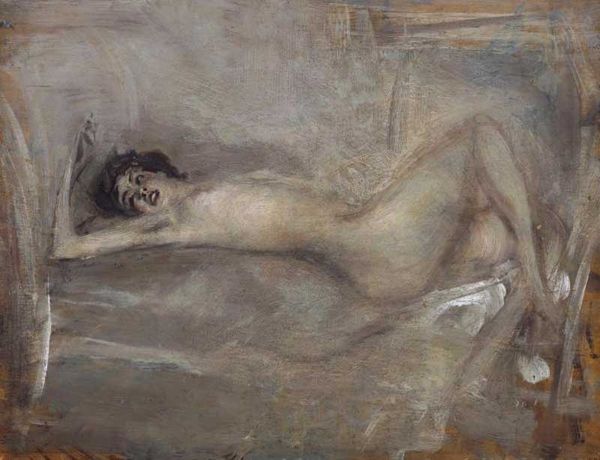
painting, watercolor
#
portrait
#
figurative
#
painting
#
figuration
#
watercolor
#
romanticism
#
academic-art
#
nude
Copyright: Public Domain: Artvee
Curator: Let's turn our attention to "The Bather," a watercolor by Jean Auguste Dominique Ingres, painted in 1808. It’s a beautiful example of academic art blended with early Romanticism. Editor: Mmm, cool and almost startling in its simplicity. It makes me think of those stolen, fleeting moments of solitude, you know? Curator: Indeed. Consider the gaze. The woman’s averted face forces us to consider the power dynamics inherent in the act of looking, reflecting on the historical context of representing women in art and the male gaze that dominated the artistic landscape at the time. Editor: Yes, yes, but the way he’s captured the light, too! Like a veil barely skimming her skin. There is a lot of implied but also averted nudity here that feels kind of like vulnerability, I think? It almost gives a stage set kind of feel to it; makes you wonder about her world, doesn’t it? Curator: Absolutely. This artwork also serves as a lens to discuss intersectional identity, particularly how race, class, and gender influenced perceptions and representations of women within Neoclassical art. We need to recognize that idealizing a white female figure normalizes very limited and potentially problematic standards of beauty. Editor: So true! Beauty ideals always have an “-ism” lurking beneath. Still, this image—even knowing all that—touches on something timeless about longing and wanting space for yourself. It’s odd, but despite all the politics baked in, you know, because they always are, this nude speaks of that feeling more. Curator: In closing, this watercolor from 1808 certainly showcases a range of artistic and critical debates spanning many different aspects of visual and social life. Editor: Exactly! Ingres' bather gives a quiet yet piercing way of capturing life, where we think and act.
Comments
No comments
Be the first to comment and join the conversation on the ultimate creative platform.
